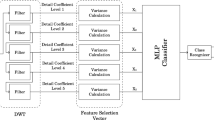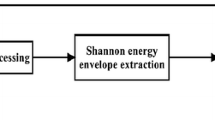Abstract
Purpose
This paper aims for accurate classification of ECG beats in real-time.
Methods
The design, implementation and results of FPGA oriented SOC based embedded platform in laboratory experimental setup is presented. The platform is designed using high-level systematic approach having the capability of real-time classification of ECG beats at the place of patients with high accuracy which will be helpful to enhance the healthcare for cardiovascular diseases. The algorithm involves the integration of the R-peak detection algorithm and Rulebased approach to classify four generic heartbeat classes namely Normal, PVC, Ventricular Fibrillation/Ventricular Flutter, 2° heart block beat. The aforesaid algorithms are performed in software on an integrated TSK3000A processor core (IP cores used) and implemented in hardware targeting FPGA (Xilinx Spartan 3AN). The developed platform is validated by generating real-time ECG beats using MIT-BIH arrhythmia database.
Results
The performance of the proposed implementation is evaluated in terms of sensitivity, specificity, positive predictivity and accuracy which is 97.72%, 99.09%, 96.46% and 97.96% respectively.
Conclusions
The proposed hardware/software implementation has yielded improved results in comparison to the existing methodologies implemented on the FPGA platforms.
Similar content being viewed by others
References
Hu YH, Palreddy S, Tompkins WJ. A patient-adaptable ECG beat classifier using a mixture of experts approach. IEEE T Biomed Eng. 1997; 44(9):891–900.
Cano-Garcia JM, Gonzalez-Parada E, Alarcon-Collantes V, Casilari-Perez E. A PDA-based portable wireless ECG monitor for medical personal area networks. Conf Proc IEEE Mediterr Electrotech Conf. 2006; 713–6.
Chung WY, Yau CL, Shin KS, Myllyla R. A cell phone based health monitoring system with self analysis processor using wireless sensor network technology. Conf Proc IEEE Eng Med Biol Soc. 2007; 3705–8.
Lee TS, Hong JH, Cho MC. Biomedical digital assistant for ubiquitous healthcare. Conf Proc IEEE Eng Med Biol Soc. 2007; 1790–3.
Chen X, Ho CT, Lim ET, Kyaw TZ. Cellular phone based online ECG processing for ambulatory and continuous detection. Comput Cardiol. 2007; 34(2):653–6.
Goh KW, Lavanya J, Kim Y, Tan EK, Soh CB. A PDA-based ecg beat detection for home cardiac care. Conf Proc IEEE Eng Med Biol Soc. 2005(1); 375–8.
Rodriguez J, Goi A, Illarramendi A. Real-time classification of ecgs on a PDA. IEEE Trans Inf Tech Biomed. 2005; 9(1):23–34.
Jin Z, Sun Y, Cheng AC. Predicting cardiovascular disease from real-time electrocardiographic monitoring: An adaptive machine learning approach on a cell phone. Conf Proc IEEE Eng Med Biol Soc. 2009; 6889–92.
Chazel PD, O'Dwyer M, Reilly RB. Automatic classification of heartbeats using ECG morphology and heartbeat interval features. IEEE T Biomed Eng. 2004; 51(7):1196–206.
Hu YH, Tomkins WJ, Urrusti JL, Afonso VX. Application of artificial neural networks for ECG signal detection and classification. J Electrocardiol. 1993; 26:66–73.
Chazal PD, Reilly RB. A patient adapting heart beat classifier using ECG morphology and heartbeat interval fatures. IEEE T Bio-med Eng. 2006; 53(12):2535–43.
Minami K, Nakajima H, Toyoshima T. Real-time discrimination of ventricular tachyarrhythmia with fourier-transform neural network. IEEE T Biomed Eng. 1999; 46(2):179–85.
Melgani F, Bazi Y. Classification of electrocardiogram signals with support vector machines and particle swarm optimization. IEEE Trans Inf Tech Biomed. 2008; 12(5):667–77.
Osowski S, Linh TH, Markiewicz T. Support vector machinebased expert system for reliable heartbeat recognition. IEEE T Bio-med Eng. 2004; 51(4):582–9.
Osowski S, Linh TL. ECG beat recognition using fuzzy hybrid neural network. IEEE T Biomed Eng. 2001; 48(11):1265–71.
Lagerholm M, Peterson G, Braccini C, Edenbrandt L, Sornmo L. Clustering ECG complexes using hermite functions and selforganizing maps. IEEE T Biomed Eng. 2000; 47(7):838–48.
Senhadji L, Carrault G, Bellanger JJ, Passariello G. Comparing wavelet transforms for recognizing cardiac patterns. IEEE Eng Med Biol. 1995; 14(2):167–73.
Linh T, Osowski SL, Stodoloski M. On-line heart beat recognition using hermite polynomials and neuron-fuzzy network. IEEE T Instrum Meas. 2003; 52(4):1224–31.
Cvikl M, Zemva A. FPGA-oriented HW/SW implementation of ECG beat detection and classification algorithm. Dig Sig Proc. 2010; 20(1):238–48.
Ozdemir AT, Danisman K. Fully parallel ANN-based arrhythmia classifier on a single-chip FPGA. Turk J Elec Eng Comp Sci. 2011; 19(4):667–87.
Cvikl M, Zemva A. FPGA-based system for ECG beat detection and classification. Conf Proc IFMBE. 2007; 66–9.
Nambakhsh MS, Tavakoli V, Sahba N. FPGA-core defibrillator using waveletfuzzy ECG arrhythmia classification. Conf Proc IEEE Eng Med Biol Soc. 2008; 2673–6.
Tsipouras MG, Fotiadis DI, Sideris D. An arrhythmia classification system based on the RR-interval signal. Artif Intell Med. 2005; 33(3):237–50.
Moody GB, Mark RG. The impact of MIT-BIH arrhythmia database. IEEE T Biomed Eng. 2001; 20(3):45–50.
Pan J, Tompkins WJ. A real-time QRS detection algorithm. IEEE T Biomed Eng. 1985; 32(3):230–6.
Inan OT, Giovangrandi L, Kovacs GT. Robust neural-networkbased classification of premature ventricular contractions using wavelet transform and timing interval features. IEEE T Biomed Eng. 2006; 53(12):2507–15.
Author information
Authors and Affiliations
Corresponding author
Rights and permissions
About this article
Cite this article
Raj, S., Maurya, K. & Ray, K.C. A knowledge-based real time embedded platform for arrhythmia beat classification. Biomed. Eng. Lett. 5, 271–280 (2015). https://doi.org/10.1007/s13534-015-0196-9
Received:
Revised:
Accepted:
Published:
Issue Date:
DOI: https://doi.org/10.1007/s13534-015-0196-9




